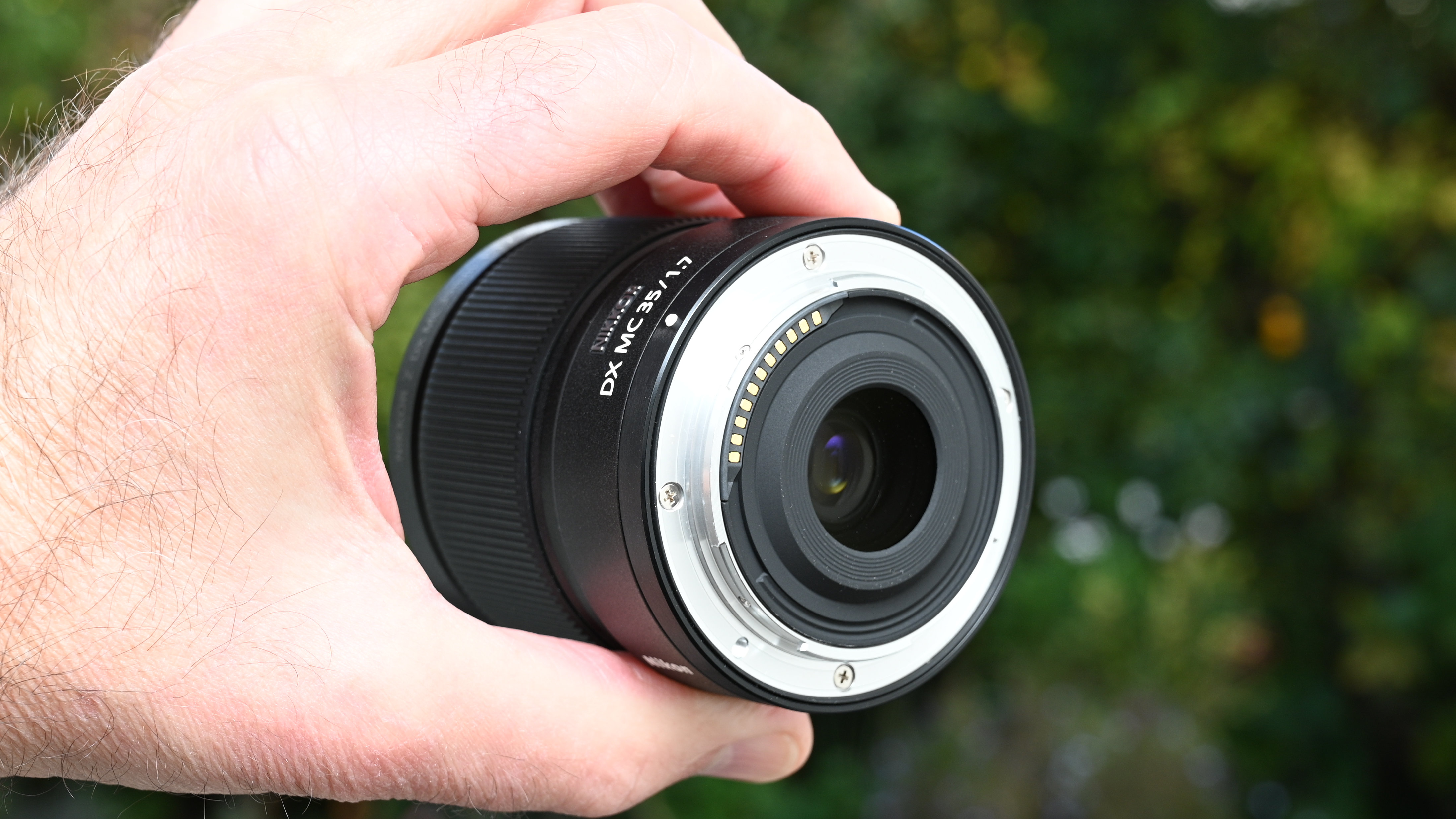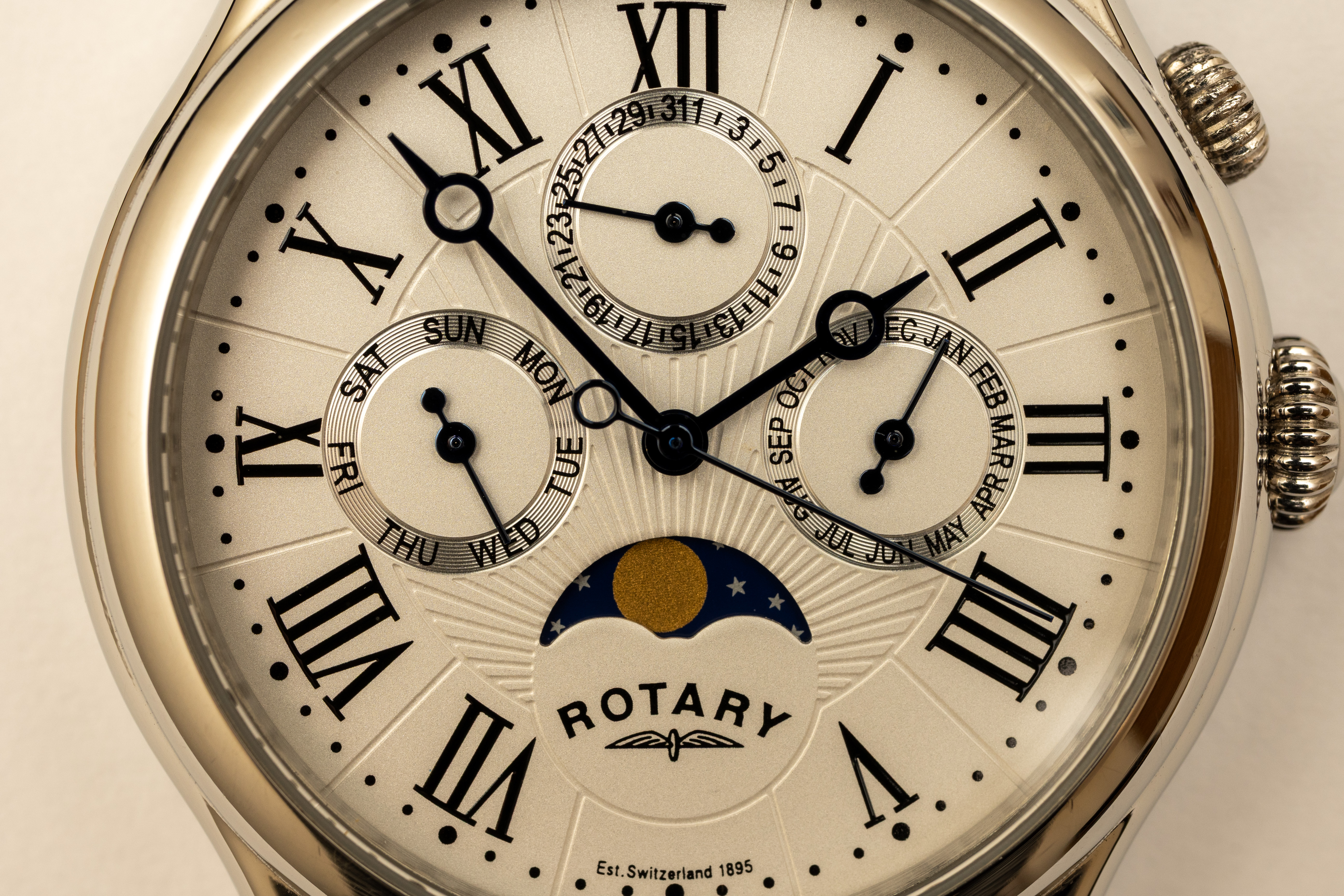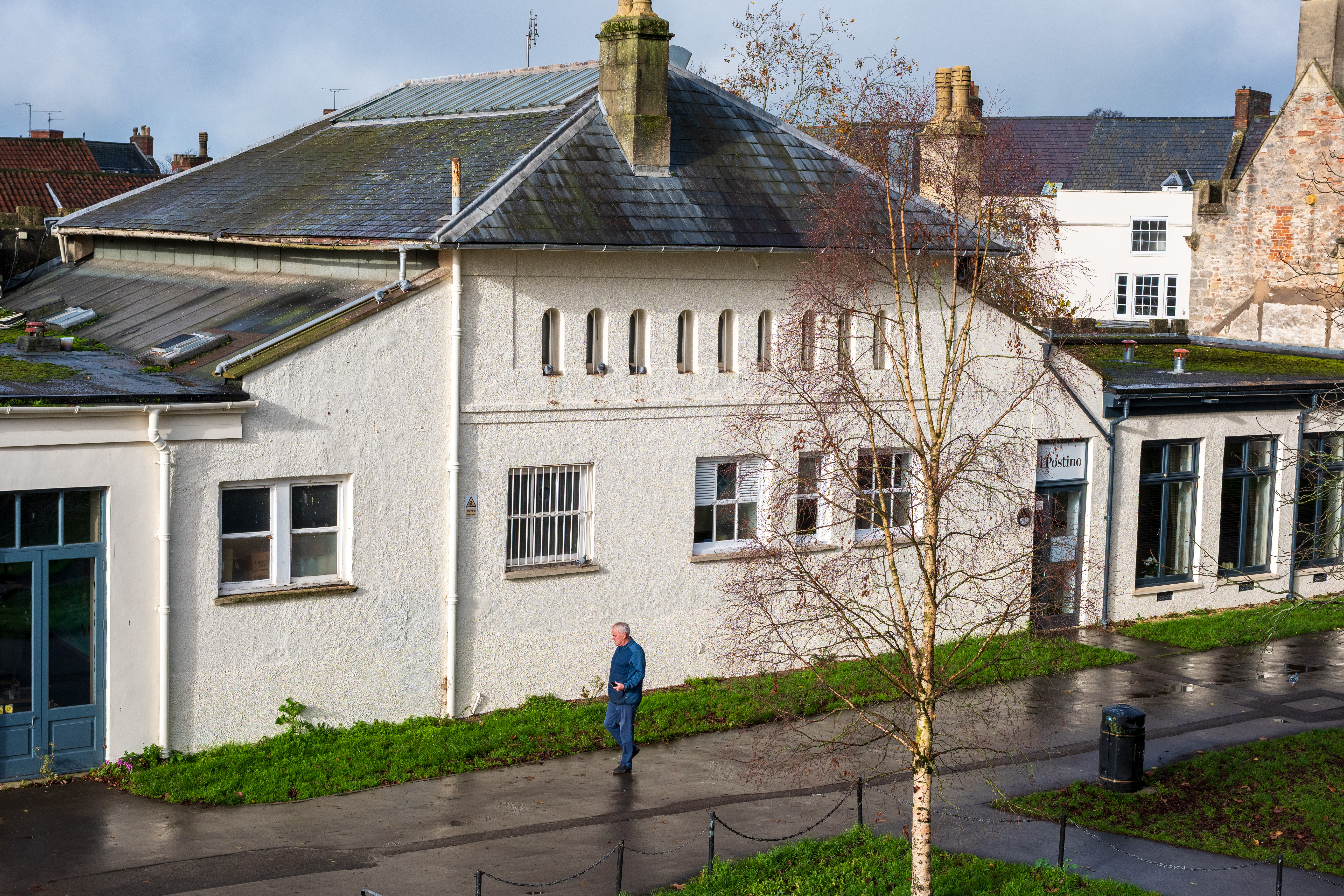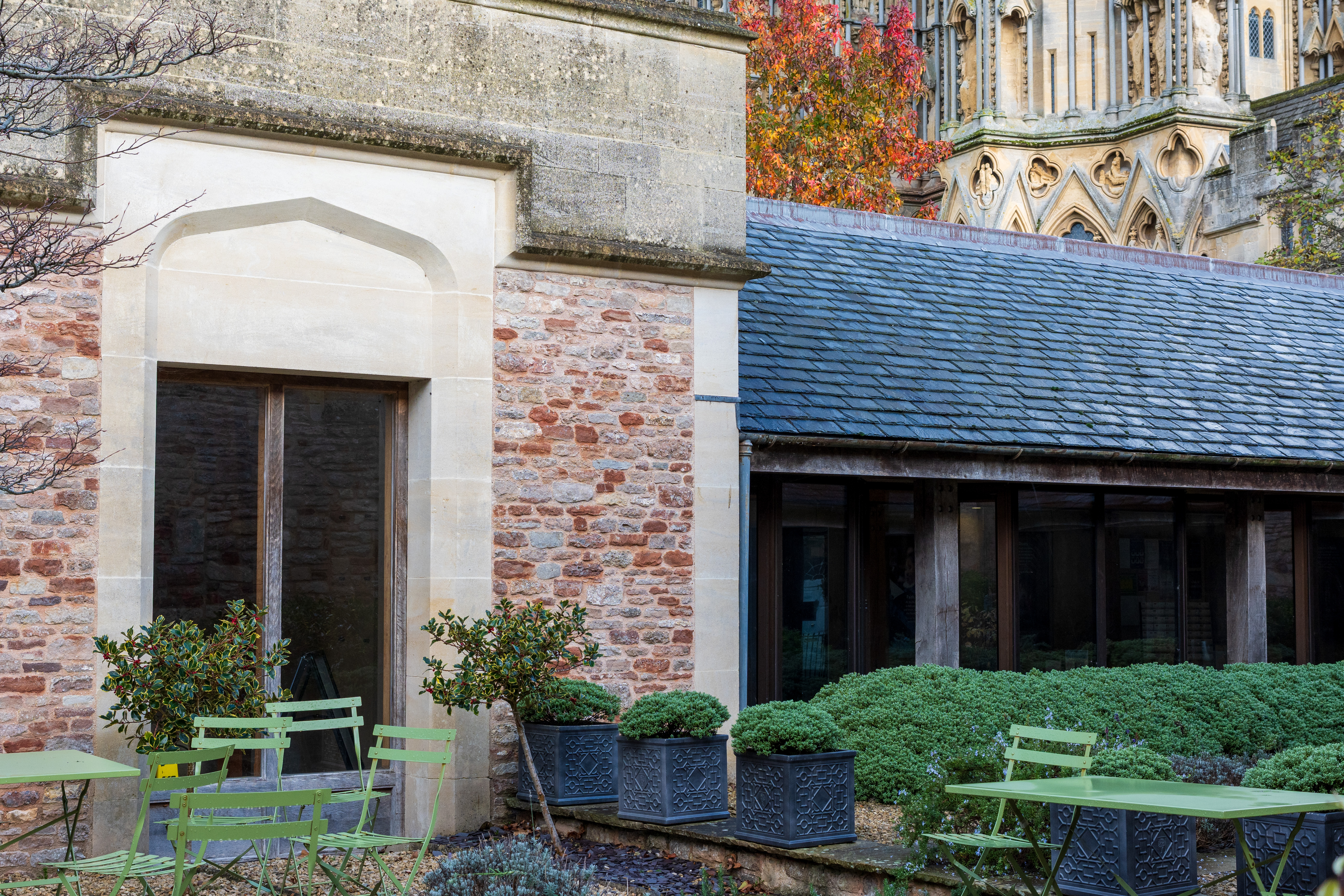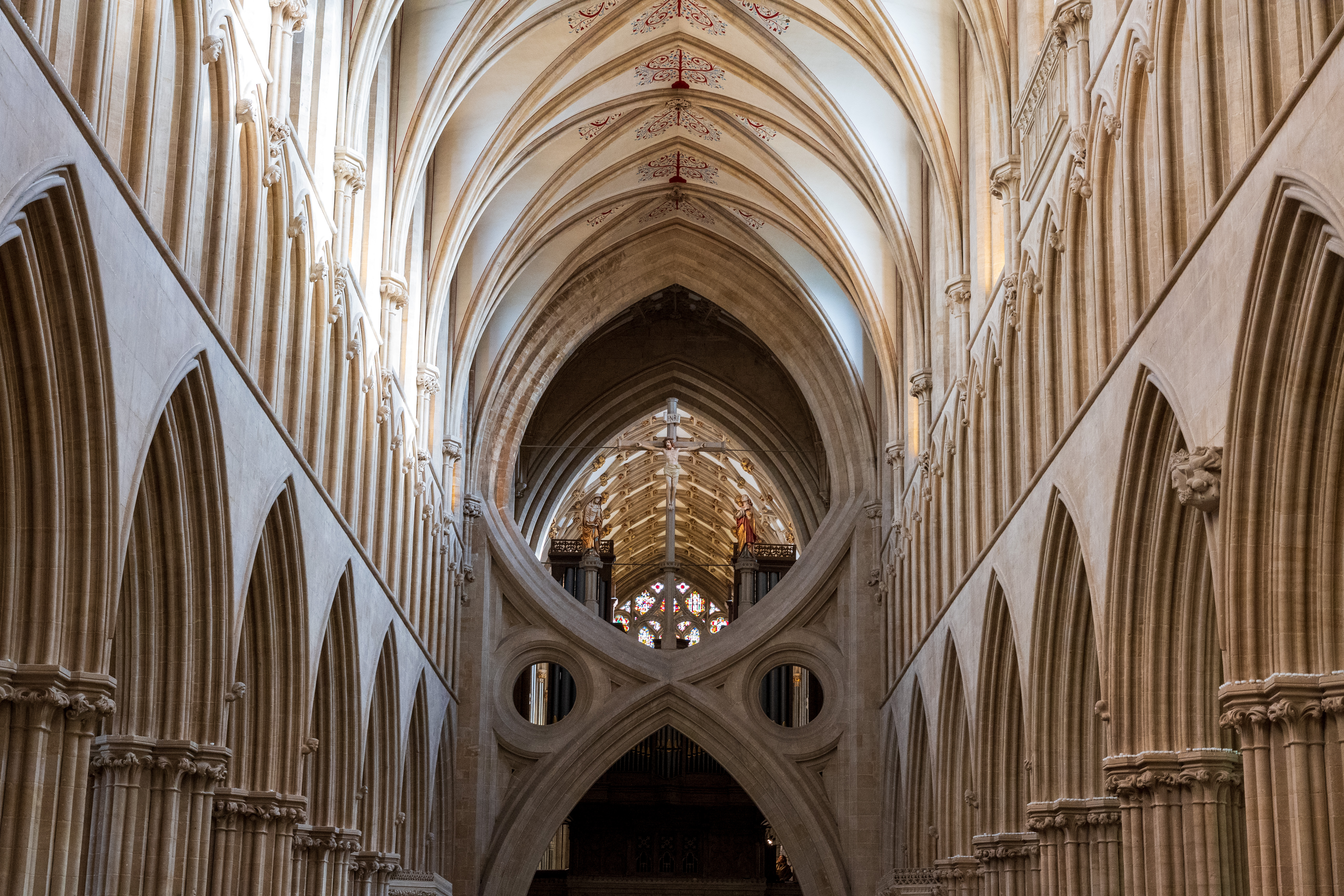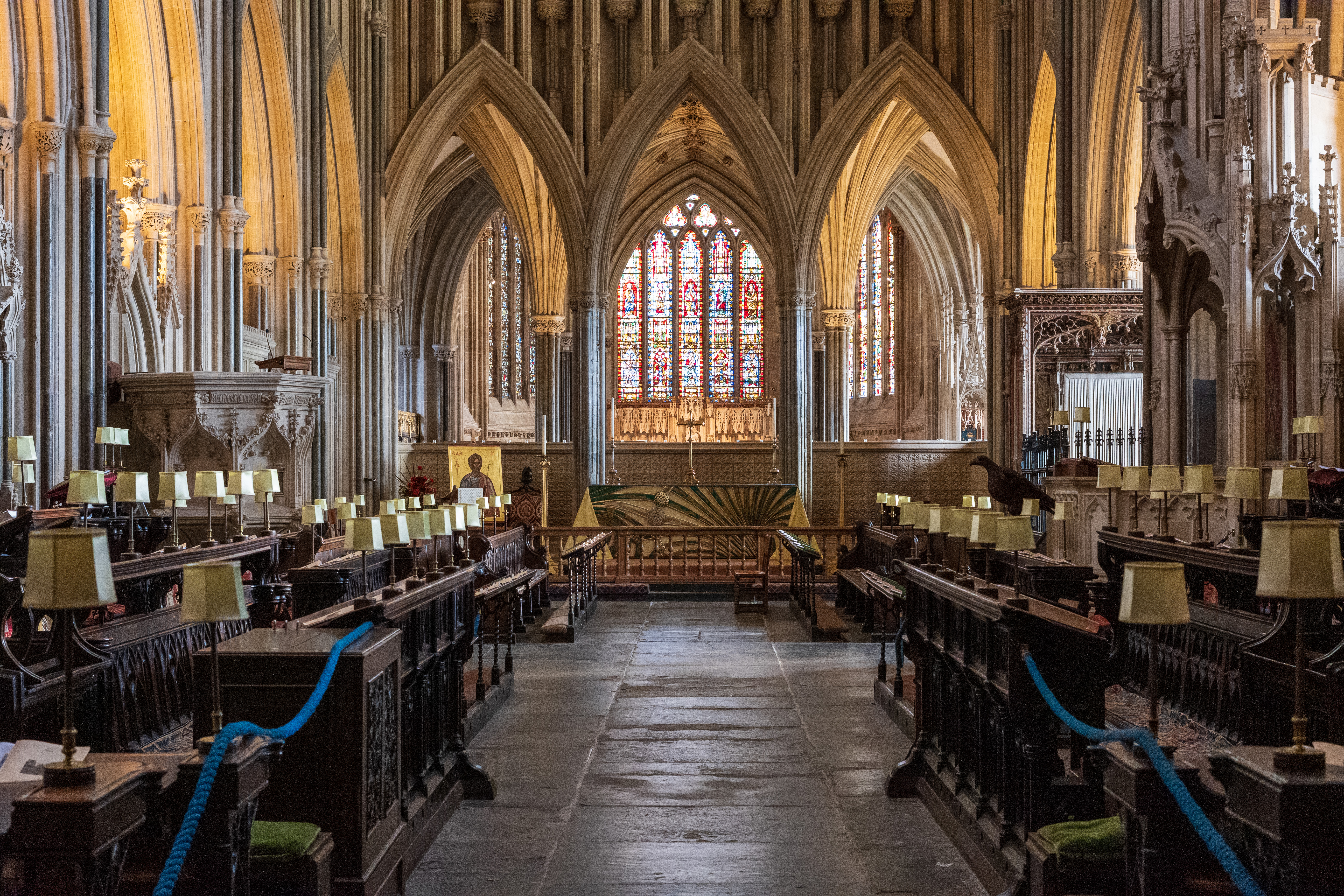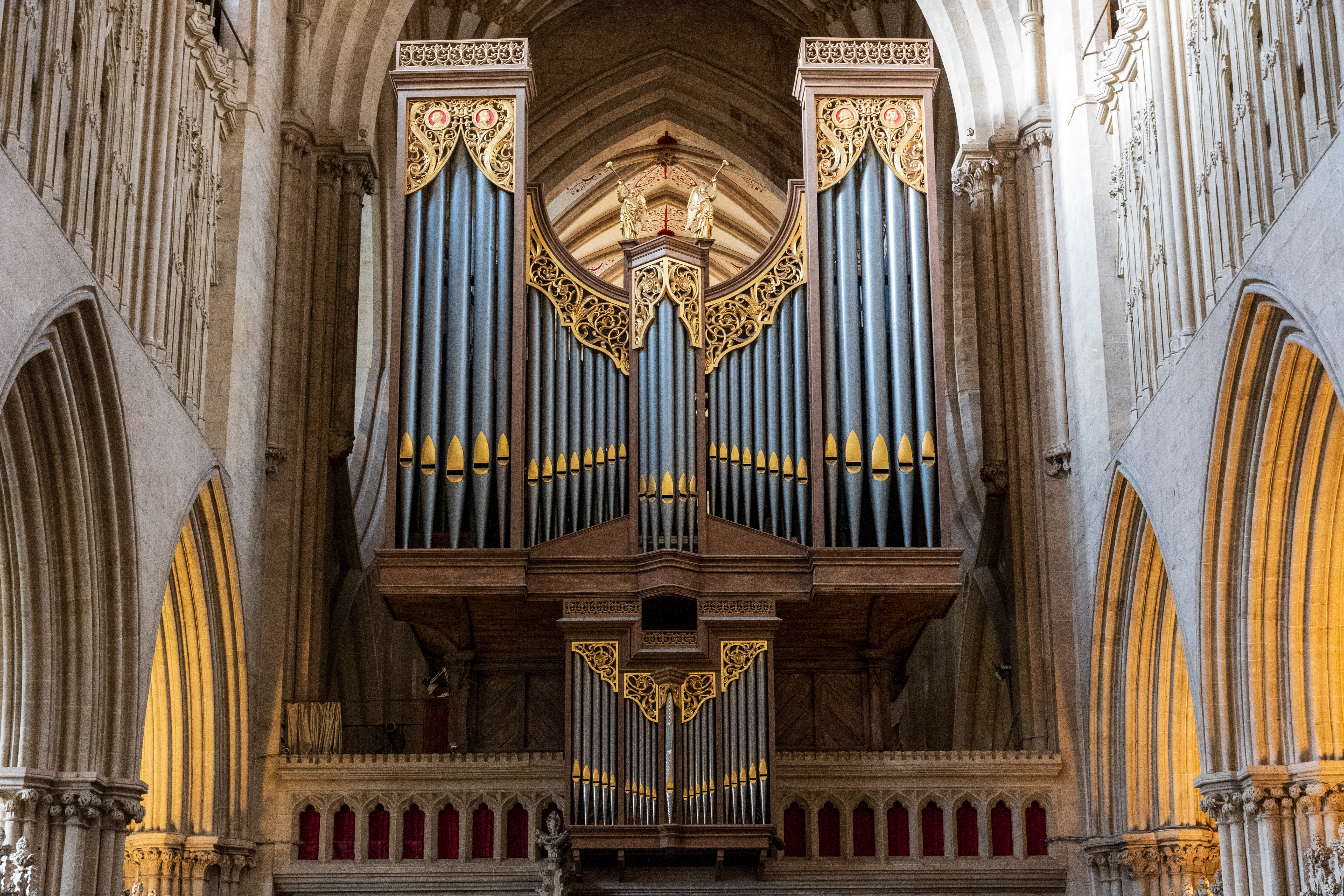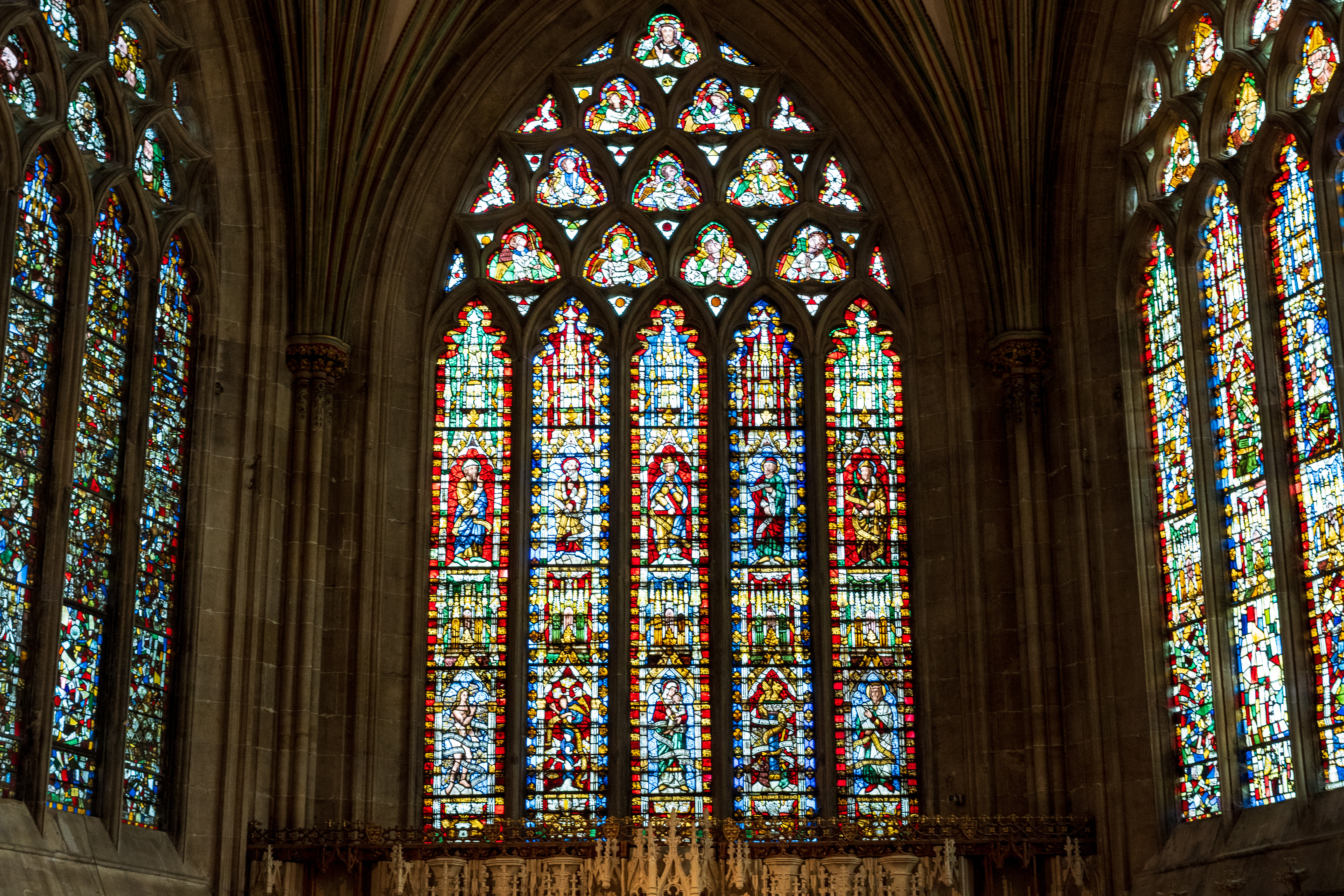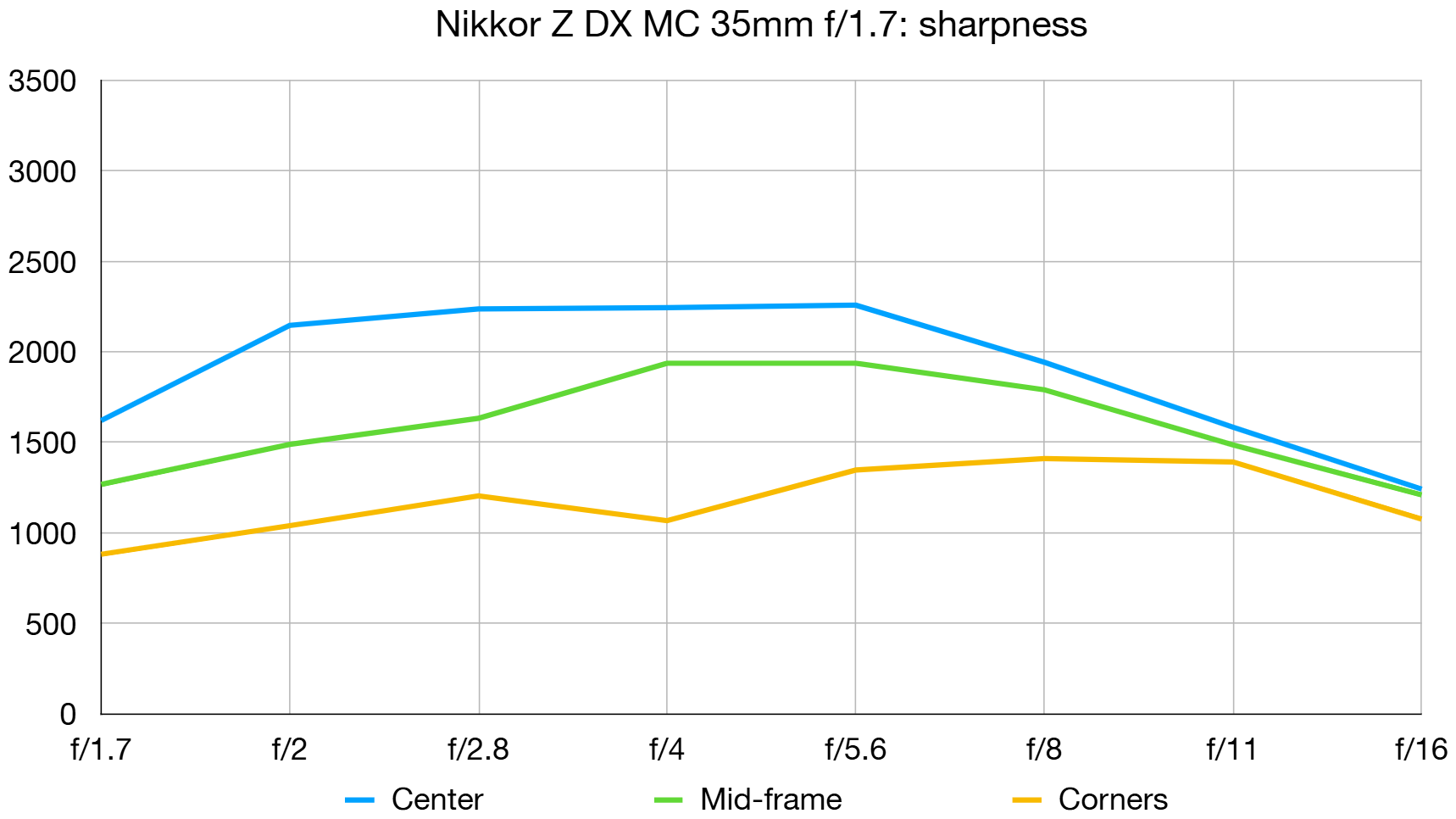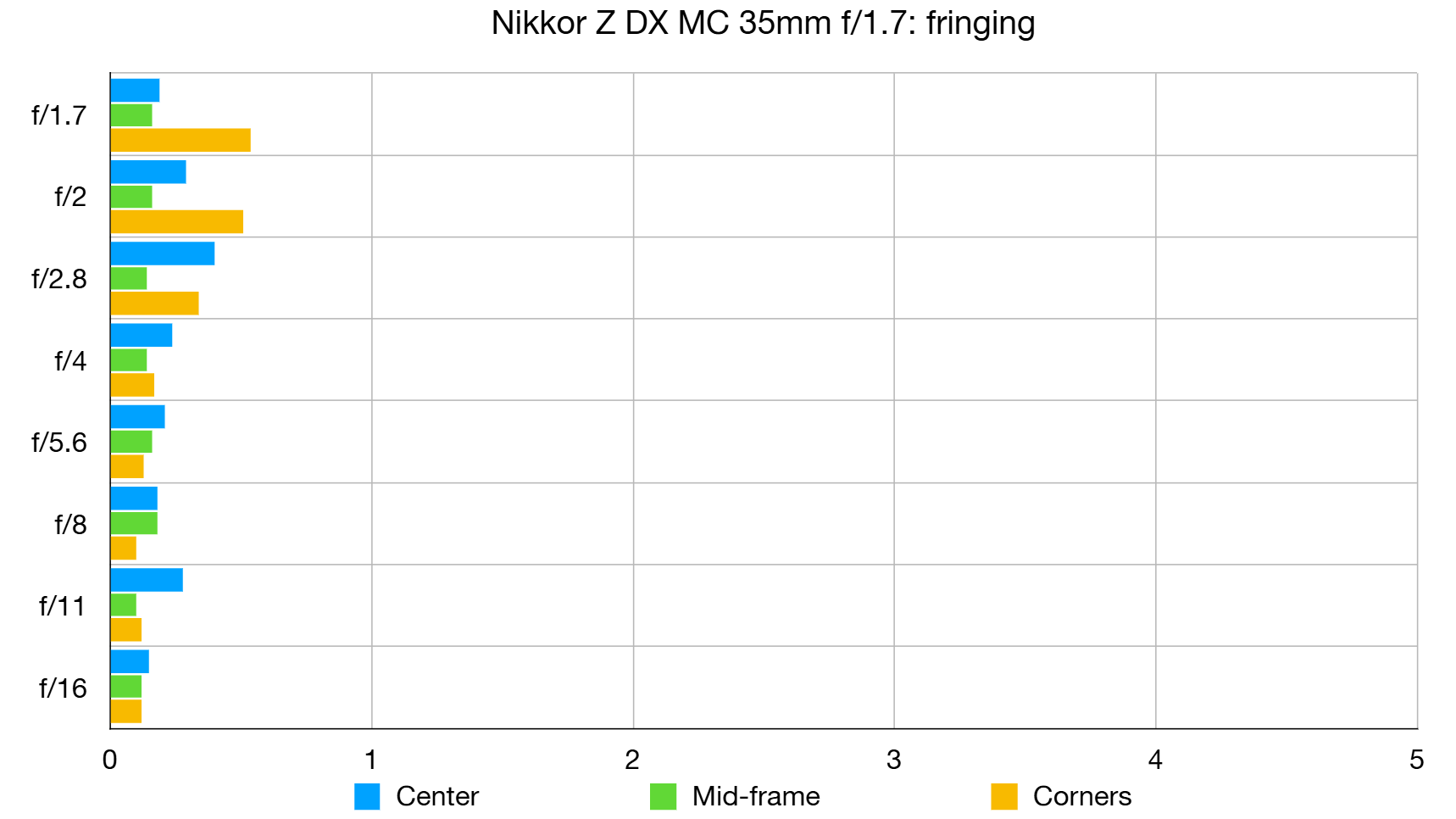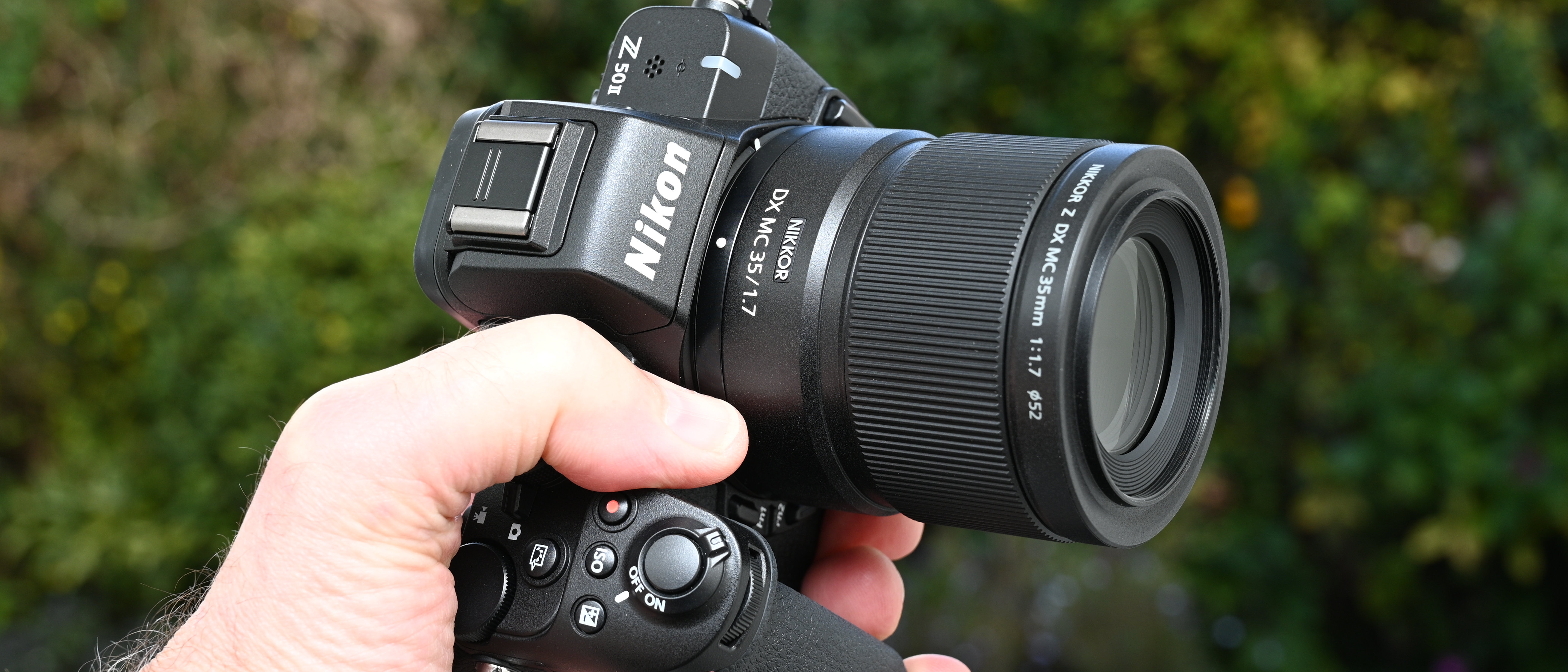Why you can trust Digital Camera World
Our expert reviewers spend hours testing and comparing products and services so you can choose the best for you. Find out how we test.
I think that the breadth and strength of any camera system is more about the supporting cast of its lenses, rather than the actual camera bodies themselves. It might seem a little surprising then that Nikon has so far made four different DX (APS-C) format Z-system camera bodies but only one DX format prime lens. That’ll be the Nikon Z DX 24mm f/1.7. Naturally, you can use Z FX (full-frame) lenses on DX format bodies and some are an especially good fit. I pair my Nikon Z fc with a Nikon Z 28mm f/2.8 SE most of the time, which is a great match in size, weight and retro styling. However, most full-frame compatible lenses are bigger, weightier and more expensive than they need to be for DX cameras, as they need to produce a bigger image circle to cover a full-frame sensor.
The advent of this Z MC 35mm prime goes some way to redressing the balance. Like the equally new Z 16-50mm f/2.8 VR constant-aperture zoom, it also represents a step up in build quality, having a ‘proper’ metal mounting plate, whereas all other Z DX (and some Z FX) lenses so far have had plastic mounting plates. Combining the natural perspective of a standard prime with a fair amount of macro potential, the Z MC 35mm aims to be one of the best of the best Nikon Z lenses for DX format cameras, as well as one of the best macro lenses.
Nikon Z DX MC 35mm f/1.7: Specifications
|
Mount options |
Nikon Z (DX) |
|
Lens construction |
8 elements in 7 groups |
|
Angle of view |
44 degrees |
|
Diaphragm blades |
9 |
|
Minimum aperture |
f/16 (f/22 macro) |
|
Minimum focus distance |
0.16m |
|
Maximum magnification |
0.67x |
|
Filter size |
52mm |
|
Dimensions |
70x72mm / 2.8×2.9in |
|
Weight |
220g / 7.8oz |
Nikon Z DX MC 35mm f/1.7: Price
The most obvious lens for price comparison is the Nikon Z DX 24mm f/1.7. After all, they’re both Z DX prime lenses and both have the same aperture rating of f/1.7. Cutting straight to the bottom line, the 24mm costs $277 / £289 / AU$500, whereas the Z DX MC 35mm is considerably pricier at $447 / £399 / AU$699. In its favor, the 35mm feels more robust and substantial, and features a metal rather than plastic mounting plate. The flipside is that the 24mm lens is supplied complete with a lens hood, whereas you have to pay extra for that privilege with the 35mm, and the official Nikon HN-43 hood is a pricey ‘optional extra’ at $40 / £18 / AU$49.
Nikon Z DX MC 35mm f/1.7: Design & Handling
When is a macro lens not a macro lens? Opinion differs. It’s often said that a ‘true’ macro lens can deliver a 1.0x or 1:1 reproduction ratio at its minimum focus distance. In a nutshell, or for some other suitably small subject matter, that means that an object is reproduced on the camera’s image sensor at full life size. And naturally, if you’re filling your whole image sensor with something the size of a postage stamp, the potential for enlargement at the viewing stage, either on-screen or in print, is absolutely enormous. Some macro lenses go even further, with 2.0x or more magnification. Others don’t. You’ll often see lenses bearing a ‘Macro’ badge that only offer 0.5x maximum magnification or even less. That’s true for both prime as well as zoom macro lenses.
So, where does the Nikon Z DX MC 35mm f/1.7 fit into the macro picture? Technically, it has a maximum macro magnification of 0.67x, so it’s not a ‘true’ or ‘full’ macro lens, despite its MC credentials. However, as well as being an MC lens, it’s also a DX lens, thus designed for Z-system cameras with an APS-C format image sensor. It’s often said that the 1.5x crop factor (compared with full-frame sensors) gives a focal length multiplier of the same amount. That has two interesting outcomes for this particular lens.
First up, the lens’s ‘effective’ focal length is boosted from 35mm to 52.5mm in full-frame terms. That’s not exactly a nice round number, but the viewing angle of 44 degrees is almost exactly the same as shooting with a 50mm lens on a full-frame camera. That’s good news in that the lens gives a very natural perspective, which has been greatly favored by many photographers down the years. What you see through the lens looks very much like what you see with the naked eye.
Secondly, as with any other crop-sensor camera and lens partnership, the crop factor has a direct bearing on the ‘effective’ maximum magnification ratio. Again, multiply the 0.67x native magnification by 1.5x and you get almost exactly a full 1.0x magnification in full-frame terms. As such, if a small object will fill the whole image sensor of a full-frame camera when using a 1.0x lens, it’ll also fill the sensor of an APS-C camera with this 0.67x macro lens. You could argue that it, therefore, is a ‘full’ macro lens after all, but bear in mind that if you were to use a 1.0x macro lens, the magnification would be effectively bumped up to 1.5x.
I’m not trying to labor the point, but I feel that most of what this lens has to offer is for general shooting rather than for macro photography. That ‘effective’ 50mm focal length and fast f/1.7 aperture combine to great effect. I’ve known professional wedding photographers who shoot the entire event with just a 50mm lens on a full-frame camera. Suffice it to say, the focal length is great for portraits, landscapes, still life, food, fashion and almost anything else you can think of.
And then there’s the aperture. Some say an aperture of f/2.8 is ‘fast’. Maybe it is in zoom lens world but on planet prime, f/2.8 is distinctly pedestrian. This lens has an aperture that’s a whole 1.5 f/stops faster than an f/2.8 lens. The result? You’ll get a tighter depth of field for isolating a main subject within a scene, along with faster shutter speeds to freeze the action under dull lighting. It’s a win-win, especially if you’re hungry for bokeh or taking indoor action shots.
Ideal as a go-anywhere, do-anything lens, this one measures just 70x72mm / 2.8×2.9in and weighs a mere 220g / 7.8oz. It’s definitely one for the road, being compact and very lightweight. The optical design is based on 8 elements arranged in 7 groups, and features one aspherical ED (Extra-low Dispersion) element. The aperture diaphragm is nicely rounded, based on 9 curved blades. For general shooting, the complete aperture range runs from f/1.7 wide open to f/16 at its narrowest setting. Bear in mind, though that, as with other macro lenses, less light is transmitted at or near the minimum focus distance, so the minimum effective aperture drops to f/22 in macro mode.
Plus points in terms of build quality include a metal rather than plastic mounting plate and a solid, robust feel to the lens in general. There’s no mention from Nikon about the extent of weather-seals, nor about high-tech coatings on the elements, but a quick look at the metal mounting plate confirms that a weather-seal gasket is present and correct. A definite minus point, as far as I’m concerned, is that the HN-43 hood is sold separately as an optional extra, rather than being supplied with the lens. That’s often the case with ‘budget-friendly’ Nikon lenses, but I feel it’s a bit of a raw deal having to fork out an additional $40 / £18 / AU$49 for the official Nikon hood.
Another niggle in terms of handling is that there’s no A/M focus mode switch on the barrel. You therefore need to delve into relatively time-consuming camera menus to make the change. On the plus side, and unlike some macro lenses (especially compact ones) handling benefits from a fully internal focusing mechanism. As a result, the physical length of the lens doesn’t extend at shorter focus distances, which would otherwise impinge on the macro working distance. More on that in a moment.
Nikon Z DX MC 35mm f/1.7: Performance
Shooting with this lens’s sibling, stop down a little and the Nikon Z DX 24mm f/1.7 can muster excellent sharpness at the center of the image frame but it’s rather less impressive away from the fairly small central zone. By stark contrast, this 35mm lens is pin-sharp at the center even wide-open at f/1.7, and the edges and corners catch up well at f/2.8 and narrower apertures. Color fringing is negligible at medium to narrow apertures and there’s also virtually no distortion.
Here’s another thing… Macro lenses are often quite ponderous in the autofocus department, being sluggish and prone to hunting. The high-speed linear stepping motor featured in this lens drives autofocus at a very fast pace and there’s no need for an autofocus range limiter switch. It’ll also deliver smooth and virtually silent autofocus transitions when shooting video. And with video in mind, the lens also has minimal focus breathing and a customizable control ring that’s ideal for silent and stepless aperture adjustments.
So yes, it works just great as a general-purpose standard prime. But let’s get back to its ‘MC’ macro abilities. There’s actually an upside in the relatively modest 0.67x maximum magnification ratio. When I use a full macro lens, I tend to favor a focal length of around 90-105mm. The main reason is that it enables a comfortable working distance between the front of the lens and the subject that I’m shooting. Full 1.0x macro lenses with shorter focal lengths (like this one) are notorious for giving you horribly short working distances that are difficult to manage, and you can also end up blocking ambient light from reaching the subject and casting a shadow over it.
Speaking of inconvenient closeness, Nikon’s own AF-S DX Micro 40mm f/2.8G is a classic case in point, with its minimum working distance of just 3.5cm or 1.4 inches. The minimum focus distance of this 35mm lens is a more relaxed 16cm or 6.3 inches, as measured from the focal plane. That results in a working distance of 6cm or 2.4 inches from the front of the lens to the subject, which is nearly twice as much and much more manageable.
You have to be wary of camera-shake spoiling sharpness. Sure, the f/1.7 aperture enables relatively fast shutter speeds even under dull lighting conditions but that’s not the whole story. You’ll often want to use a narrower aperture to extend your depth of field, or to get any depth of field at all in macro shooting. Whereas some macro lenses feature ‘hybrid’ optical stabilization that corrects for X/Y shift as well as the usual angular vibration or wobble, this lens has no optical stabilization at all. And to make matters worse, there’s no IBIS (In-Body Optical Stabilization) in any of Nikon’s DX format Z-system cameras thus far. It’s a trick missed as far as I’m concerned.
Nikon Z DX MC 35mm f/1.7: Sample Images
The following gallery of example images was shot in the cathedral and surrounding city of Wells, which happens to be the smallest city in England – ideal for a macro lens. I took a collection of close-ups as well as regular-distance shots, to demonstrate the lens’s usefulness in both contexts. There are also some wide-aperture photos to show the tight depth of field that’s available, and the quality of the bokeh. Have a browse through and you’ll get a feel for the lovely pictorial quality of which this lens is capable.
Nikon Z DX MC 35mm f/1.7: Lab Results
We run a range of lab tests under controlled conditions, using the Imatest Master testing suite. Photos of test charts are taken across the range of apertures and zooms (where available), then analyzed for sharpness, distortion and chromatic aberrations.
We use Imatest SFR (spatial frequency response) charts and analysis software to plot lens resolution at the center of the image frame, corners and mid-point distances, across the range of aperture settings and, with zoom lenses, at four different focal lengths. The tests also measure distortion and color fringing (chromatic aberration).
Sharpness:
Center-sharpness is more than adequate wide-open at f/1.7 and thoroughly excellent from f/2 right through to f/8. It remains very good at f/11 and drops off a little at f/16 due to the usual phenomenon of diffraction. Sharpness is also maintained very well from the center right out to the extreme edges and corners of the frame.
Fringing:
There’s a little color fringing at the edges and corners of the image frame at wide apertures of f/1.7 to f/2. It’s less noticeable at f/2.8 and virtually non-existent at apertures of f/4 and narrower. In practice, the elimination of color fringing at all apertures is easily within the remit of automatic correction, featured in all Nikon Z-system cameras.
Distortion: 0.22
There’s the merest hint of pincushion distortion but it’ll generally go unnoticed in real-world shooting, even if you’re shooting the likes of postage stamps with perfectly straight sides, in macro photography. And that’s with automatic in-camera correction switched off. Enable auto correction and it essentially becomes a zero-distortion lens.
Nikon Z DX MC 35mm f/1.7: Verdict
People often say that zoom lenses are more versatile than primes, but I think that the Nikon Z DX MC 35mm f/1.7 serves up a very good counter-argument. I found it wonderfully versatile during my testing and well able to take on all sorts of shooting scenarios. Sure, it has a fixed focal length, but being roughly equivalent to a 50mm in full-frame terms, it has a very natural field of view. That makes it very well suited to general shooting, while the fast f/1.7 aperture enables a tight depth of field for creative effect, and allows you to freeze motion in its tracks.
Then there’s the macro facility, and while it’s not a ‘full macro’ lens, you do get a full 1.0x magnification once you take the DX crop factor into account. Many macro lenses have slow autofocus systems that are prone to hunting and feature an autofocus range limiter switch. I found that this lens delivers fast, snappy autofocus for general shooting and extreme close-ups alike, adding further to its all-round versatility. All in all, it’s a very desirable prime lens that’s well-made and keenly priced. However, I’d prefer it to have an A/M focus mode switch, and I feel a bit short-changed that the hood is sold separately.
|
Features ★★★★☆ |
Top features are the fast f/1.7 aperture rating and macro facility, but there’s no image stabilization and the hood is sold separately. |
|
Design ★★★★☆ |
The design is simple but effective. The lens is certainly streamlined but I’d have preferred an A/M focus mode switch to be fitted. |
|
Performance ★★★★★ |
Image quality is highly impressive in all respects, and autofocus is fast and consistently accurate for close-ups as well as general shooting. |
|
Value ★★★★☆ |
It’s a lot pricier than its sibling Nikon Z DX 24mm f/1.7 lens but better built and more versatile, making it pretty good value. |








